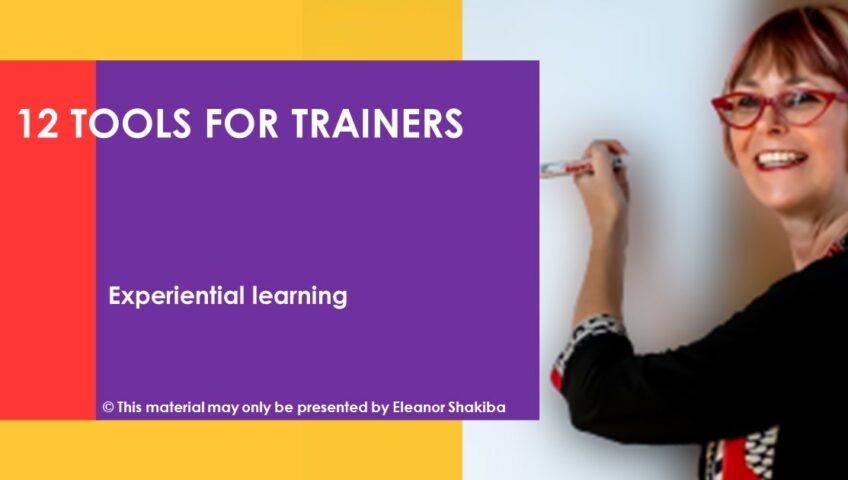Reading about how to do something isn’t the same as doing something. If you want to learn to fish, you need to master the use of a fishing pole. The same concept can be applied to corporate training. Smart facilitators don’t tell people how to do things. They use experiential learning techniques to foster skill development.
The idea behind experiential learning is that people learn best by doing. Instead of listening to a lecture, they learn by trying things out, taking action or reflecting on past experiences. Your job, as the group leader, is to ensure that positive learning emerges (even when individuals experience setbacks, challenges or ‘failures’). This is why having a grounding in positive psychology training techniques will help you use experiential learning methods with better results.
Internships are an example of experiential learning. Interns develop their skills by observing the work of experienced individuals in their fields. They also have the chance to apply their skills and knowledge under supervision. Experiential learning in a business setting offers the same benefits.
David Kolb is credited with developing an easy-to-apply model of experiential learning. He defined four components of experiential learning, all of which align well with positive psychology techniques.
- Concrete experience
- Reflective observation
- Abstract conceptualisation
- Active experimentation
What does this mean for your work as a facilitator or training? To use experiential learning techniques, you need to provide opportunities for learners need to be actively involved. Then you need to help them reflect on their experiences and develop ‘wisdom’ and understanding. Finally, you need to encourage learners to develop plans for building on their knowledge and continuing to reflect on their results. Repeating the cycle allows individuals to continue growing and developing.
Here are some techniques that trigger experiential learning:
- Role play
- Real play (in which learners share a story and re-enact it)
- Simulation
- Action learning projects
- Review-and-reflect written activities
Are you keen to start using experiential learning techniques? Great idea! They can be used in a huge range of contexts. Start by mastering these four skills, without which activities are simply space-fillers in a training session.
- Activity design
- Framing and briefing
- Feedback and coaching
- Debriefing
Yes, learning to facilitate experiential activities does take time. However, it’s time worth investing. Ultimately it will lead to faster, more sustained learning. It’s also a useful way to begin building critical thinking skills in your learners. It allows them to use their existing skills and knowledge, which promotes confidence. It also encourages people to explore new concepts and solutions, boosting problem-solving skills.
Want to master experiential learning techniques? Enrol in a trainers’ master class with Eleanor Shakiba today.
About the author: Eleanor Shakiba
Eleanor is a specialist in positive psychology training. Her core strength is creativity, which she expresses in the training room through storytelling and visual design. She has dedicated her career to helping experienced professionals break through glass ceilings by developing their confidence, communication skills and leadership mastery. Eleanor is qualified in a range of fields including Social Anthropology, Positive Psychology, Counselling, Coaching, Adult Education and Neuro Linguistic Programming. She is also the author of the Positive Psychology Toolkit for HR and L&D Practitioners. This is a free resource for trainers and facilitators.
